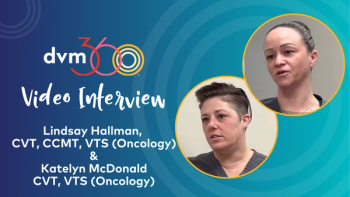
The 7 deadly sins of service
How veterinary technicians enhance client service, build trust, and avoid common pitfalls in veterinary care.
My job is to watch how veterinary professionals serve clients. Most of the time, the results are downright heavenly. However, every so often, a visit could use a sprinkle of holy water. If you want to enjoy your work, delight in meeting new faces, and feel the grace of making a meaningful difference in someone’s life, beware these 7 service sins.
Unpreparedness
Thy client has traveled many a mile to reach you. Before arriving, they toppled lamps and magazine racks to capture their cat, endured the wailing it did in the car, and worried about whether they'd be blamed for every shot, pill, and procedure that you doled out. Oh, and did I mention that they're dreading a potential bill from hell?
Help this weary pilgrim by showing them the courtesy of being ready: Know their name, pet’s name, reason for today’s visit, and medical history. Preparedness is more than politeness; it signals competence, prevents errors, builds trust, and makes sure that congregants happily add to the collection plate.
Bad impressions
After such a journey, who do you want at the pearly gates? An angel or a gargoyle?
First impressions color the entire client experience. Miss the mark at the start, and the whole chain is weakened. Remember, how clients feel about the doctor is shaped, in part, by their earlier encounters with the client service representative and technician.
Make sure your heavenly hosts are neat and presentable, their eyes are up from their screens, and their voices and expressions are alive with genuine interest. Harps and coronets can stay in the locker, but a warm “Good morning” should ring out like music.
Finally, build efficient channels of communication within the team. Clients don’t mind being cared for by several providers, as long as the group delivers care as one.
Too many options
No one ever prayed, “Lord, show me 3 possible paths, and I’ll figure out the rest.” People come for answers, not possibilities.
When recommending care, weigh the client’s wishes, budget, and your findings, then tell them plainly what you believe they should do. If their face clouds, invite conversation. Advice works best when it sounds like guidance, not a menu.
Lecturing
A hesitant client won’t be swayed by a sermon from online resources or your latest lunch-and-learn. Instead of teaching, focus on reaching. Draw out the specific reasons behind the client’s pushback or hesitation.
Remember: Stories pulled from your own experience or professional wisdom carry more weight than lectures. After all, the only reason most of us know about leprosy is because we once heard a story about Lazarus.
Multiple steps when 1 will do
The road to the vet may be long, but once inside, the path to care shouldn’t feel like purgatory. Every client handoff requires the next in line to be updated. Every pet move requires a “Come on, baby,” a treat, or coaxing from clients. These pets didn’t come here for a tour; they came for treatment. Design your service cycle with simplicity in mind. Streamline. Shorten. Save everyone’s time and energy. The seraphim will sing and rejoice.
Taking more time
No client has ever prayed, “I hope this veterinary visit lasts forever.” They come for care, not an eternity. More time does not equal a better experience. What clients truly want from their health care provider is preparation, focus, and trustworthiness. That’s not achieved with more time but by your team’s ability to thoughtfully strategize efficient service. You have a least 4 members involved with every client service exchange. What’s the best way to employ them synergistically?
Avoiding conflict
Perhaps the gravest sin of all is ignoring the client with the tight smile, pout, or the storm cloud face.
In your hospital, you hold the power. Use it to open the door. Say, “Help me understand what you’re thinking. I want to help,” or, “Talk to me. I want you to feel heard.”
Yes, it’s risky. Sometimes attempts to connect backfire, but like the road to hell, the road to trust is also paved with good intentions. However, this road, if walked with courage, leads not to fire and brimstone but to loyalty, gratitude, and relationships that feel nothing short of divine.
Newsletter
From exam room tips to practice management insights, get trusted veterinary news delivered straight to your inbox—subscribe to dvm360.






